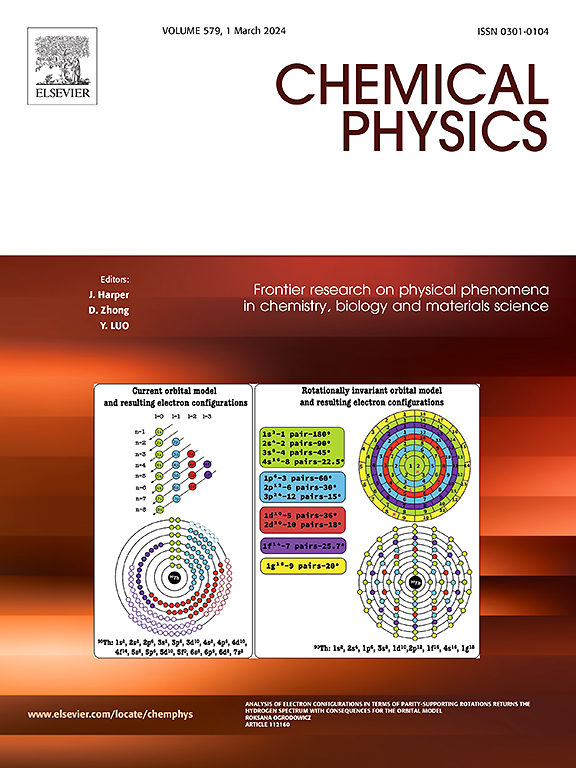储氢系统中K3XH8 (X = Cr, Mn和Fe)氢化物的结构、电子、光学和力学性能的第一性原理量子分析
IF 2
3区 化学
Q4 CHEMISTRY, PHYSICAL
引用次数: 0
摘要
可持续能源技术的进步取决于稳定有效的储氢材料的发展。本文采用第一性原理密度泛函理论(DFT)计算方法,探讨了K3XH8 (X = Cr, Mn, Fe)钙钛矿型氢化物的结构、电子、光学、机械和储氢特性。虽然电子能带结构和态密度(DOS)研究揭示了它们的金属特性,允许氢传输,但结构分析保证了这些氢化物的热力学稳定性。介电函数、折射率、吸收光谱和反射率等其他光学特性显示了它们在光电子学中的可能应用。弹性常数证实力学稳定性;进一步的研究表明,K3CrH8和K3MnH8表现为脆性行为,而K3FeH8表现为延展性行为。在计算解吸温度具有实际应用价值的情况下,储氢研究表明,K3CrH8、K3MnH8和k3feh8的重量储氢容量分别为4.55 wt%、4.47 wt%和4.45 wt%。这些结果为开发有效的固态储氢技术提供了一条途径,并对钙钛矿氢化物用于下一代储氢系统的可能性进行了深刻的分析。本文章由计算机程序翻译,如有差异,请以英文原文为准。

First-principle quantum analysis of structural, electronic, optical, and mechanical properties of K3XH8 (X = Cr, Mn and Fe) hydrides for hydrogen storage system
Advancement of sustainable energy technologies depends on the development of stable and effective hydrogen storage materials. Here we explore the structural, electronic, optical, mechanical, and hydrogen storage characteristics of K3XH8 (X = Cr, Mn, Fe) perovskite-type hydrides using first-principles density functional theory (DFT) calculations. While electronic band structure and density of states (DOS) studies expose their metallic character, allowing hydrogen transport, the structural analysis guarantees the thermodynamic stability of these hydrides. Dielectric functions, refractive indices, absorption spectra, and reflectivity among other optical characteristics show their possible use in optoelectronics. Elastic constants confirm mechanical stability; additional investigation reveals that K3CrH8 and K3MnH8 display brittle behaviour whereas K3FeH8 is ductile. With computed desorption temperatures showing realistic application, hydrogen storage study demonstrates that K3CrH8, K3MnH8, and K3FeH8have gravimetric hydrogen storage capacities of 4.55 wt%, 4.47 wt%, and 4.45 wt% accordingly. These results offer a route towards the development of effective solid-state hydrogen storage technologies and give insightful analysis of the possibilities of perovskite hydrides for next-generation hydrogen storage systems.
求助全文
通过发布文献求助,成功后即可免费获取论文全文。
去求助
来源期刊

Chemical Physics
化学-物理:原子、分子和化学物理
CiteScore
4.60
自引率
4.30%
发文量
278
审稿时长
39 days
期刊介绍:
Chemical Physics publishes experimental and theoretical papers on all aspects of chemical physics. In this journal, experiments are related to theory, and in turn theoretical papers are related to present or future experiments. Subjects covered include: spectroscopy and molecular structure, interacting systems, relaxation phenomena, biological systems, materials, fundamental problems in molecular reactivity, molecular quantum theory and statistical mechanics. Computational chemistry studies of routine character are not appropriate for this journal.
 求助内容:
求助内容: 应助结果提醒方式:
应助结果提醒方式:


